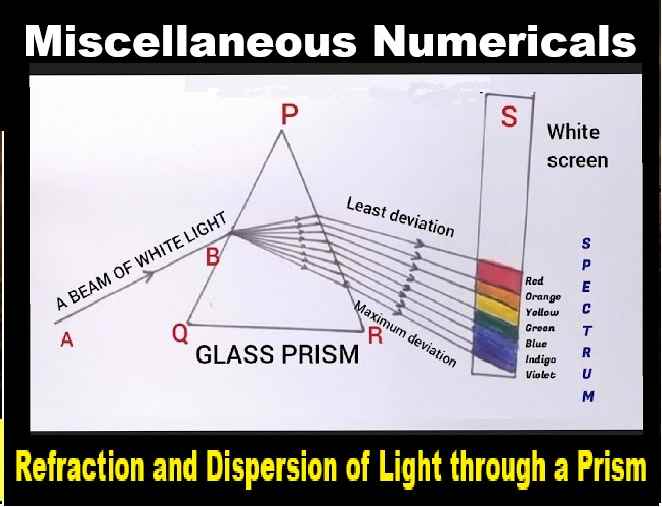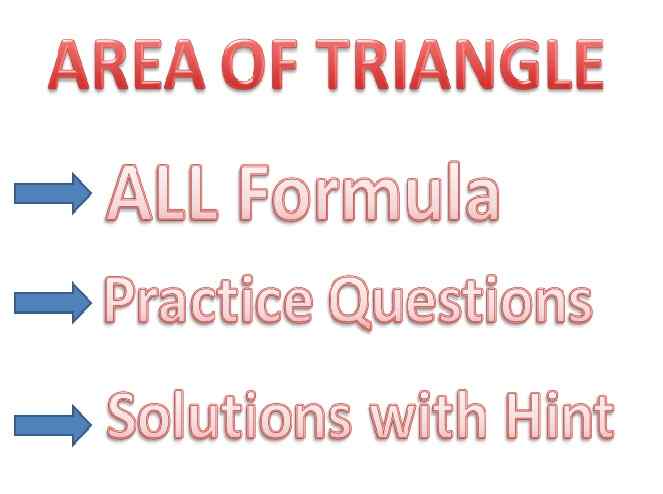Arithmetic Progression Class 10 RS Aggarwal Exe-10A Goyal Brothers ICSE Maths Solutions Ch-10. Step by step solutions of AP questions as latest prescribe guideline for upcoming exam. Visit official Website CISCE for detail information about ICSE Board Class-10 Mathematics.

Arithmetic Progression Class 10 RS Aggarwal Exe-10A Goyal Brothers ICSE Maths Solutions Ch-10
| Board | ICSE |
| Publications | Goyal Brothers Prakashan |
| Subject | Maths |
| Class | 10th |
| Chapter-10 | Arithmetic Progression |
| Writer | RS Aggarwal |
| Book Name | Foundation |
| Topics | Solution of AP Questions |
| Edition | 2024-2025 |
Arithmetic Progression
An arithmetic progression (AP) is a progression in which the difference between two consecutive terms is constant
In arithmetic progression, the first term is represented by the letter “a”, the last term is represented by “l”, the common difference between two terms is represented by “d”, and the number of terms is represented by the letter “n”
The nth Term of an AP
The nth term of an A.P is given by Tn= a+(n−1)d
Que-1: Show that the progression 11, 13, 15, 17, 19, ….. … … . is an A.P.
Write down its (i) first term (ii) common difference (iii) 20th term.
Sol: (i) first term a = 11
(ii) common difference d = 13-11
d = 2
(iii) Tn = a+(n-1)d
T20 = 11+(20-1)2
T20 = 11+(19)2
T20 = = 11+38
T20 = = 49
Que-2: Show that the progression 13,20,27,34,………. is an A.P. Write down its (i) first term (ii) common difference (iii) 16th term
Sol: (i) first term a = 13
common difference d = 20-13
d = 7
(iii) Tn = a+(n-1)d
= 13+(16-1)7
= 13+(15)7
= 13+105
= 118
Que-3: Show that the progression 10,6,2,-2,-6,…….. is an A.P. Write down its (i) first term (ii) common difference (iii) 10th term.
Sol: (i) first term a = 10
(ii) common difference d = 6-10
d = -4
(iii) Tn = a+(n-1)d
= 10+(10-1)(-4)
= 10+(9)(-4)
= 10-36
= -26
Que-4: Show that the progression 11, 5, -1, -7, -13, ….. …. .. is an A.P. Write down its (i) first term (ii) common difference (iii) 12th term
Sol: (i) first term a = 11
(ii) common difference d = 5-11
d = -6
(iii) Tn = a+(n-1)d
= 11+(12-1)(-6)
= 11+(11)(-6)
= 11-66
= -55
Que-5: Show that the progression 6,[7*(3/4)],[9*(1/2)], [11*(1/4)],………. is an A.P. Write down its (i) first term (ii) common difference (iii) 17th term
Sol: (i) first term a = 6
(ii) common difference d = (31/4)-6
= (31-24)/4 = 7/4.
(iii) Tn = a+(n-1)d
= 6+(17-1)(7/4)
= 6+(16)(7/4)
= 6+(4)(7)
= 6+28
= 34.
Que-6: Show that the progression 6,[5*(1/2)],5,[4*(1/2)],4,………. is an A.P. Write down its (i) first term (ii) common difference (iii) 9th term
Sol: (i) first term a = 6
(ii) common difference d = (11/2)-6
= (11-12)/2 = -1/2
(iii) Tn = a+(n-1)d
= 6+(9-1)(-1/2)
= 6+(8)(-1/2)
= 6+(4)(-1)
= 6-4
= 2
Que-7: Find the nth term of the A.P. 5, 11, 17, 23,………. . Using it, find its (i) 11th term (ii) 21st term
Sol: a = 5, d = 6
Tn = a+(n-1)d
Tn = 5+(n-1)6
Tn = 5+6n-6
Tn = 6n-1.
(i) T11 = a+(n-1)d
= 5+(11-1)6
= 5+(10)6
= 5+60
= 65
(iii) T21 = a+(n-1)d
= 5+(21-1)6
= 5+(20)6
= 5+120
= 125.
Que-8: Find the nth term of the A.P. 13, 7, 1, -5, -11, ….. ….. . Using it, find its (i) 9th term (ii) 16th term
Sol: a = 13, d = 7-13 = -6
Tn = a+(n-1)d
Tn = 13+(n-1)(-6)
Tn = 13-6n+6
Tn = 19-6n.
(ii) Tn = a+(n-1)d
= 13+(9-1)(-6)
= 13+(8)(-6)
= 13-48
= -35
(iii) Tn = a+(n-1)d
= 13+(16-1)(-6)
= 13+(15)(-6)
= 13-90
= -77.
Que-9: How many terms are there in the A.P. 6, 10, 14, 18,. ……..,174?
Sol: In the given AP, a = 6 and d = (10-6) = 4
Suppose that there are n terms in the given AP.
Then, Tn = 174
⇒ a+ (n-1) d =174
⇒ 6+ (n-1) × 4 = 174
⇒ 2+ 4n = 174
⇒ 4n = 172
⇒ n= 43
Que-10: How many terms are there in the A.P. 41, 38, 35, ….. …,-1?
Sol: In the given AP, a = 41 and d = (38-41) = -3
Suppose that there are n terms in the given AP.
Then Tn = -1
⇒ a + (n-1) d = -1
⇒ 41+ (n-1) × (-3) = -1
⇒ 44- 3n = -1
⇒ 3n = 45
⇒ n = 15
Que-11: Which term of the A.P. 3, 8, 13,18,23,…….. is 98?
Sol: here A = 3
d = 8-3 = 5
Then Tn = a+(n-1)d
98 = 3+5(n-1)
95 = 5(n-1)
19 = n-1
n = 20
Que-12: Which term of the A.P. 72, 68, 64, 60, is 0?
Sol: In the given AP, first term, a = 72 and common difference, d =
(68-72) = – 4.
Let its nth term be 0.
Then, Tn = 0
⇒ a + (n-1) d = 0
⇒ 72 + (n-1) × (-4) = 0
⇒ 76- 4n = 0
⇒ 4n =76
⇒ n=19
Que-13: Which term of the A.P. 1,[1*(1/6)],[1*(1/3)],………., is 3?
Sol: In the given AP, first term, a = 1 and common difference, d =
= (7/6)-1 = (7-6)/6 = 1/6
Let its nth term be 3.
Then, Tn = 3
⇒ a + (n-1) d = 3
⇒ 1 + (n-1) × (1/6) = 3
⇒ (n-1) × (1/6) = 3-1 = 2
⇒ n-1 = 2×6
⇒ n = 12+1
⇒ n = 13.
Que-14: The 4th and 10th term of an A.P. are 13 and 25 respectively. Find its (i) first term (ii) common difference (iii) 17th term.
Sol: Given : 4th term in AP is 13
10th term in AP is 25
we know that,
Tn = a+(n-1)d
4th term = 13
a+3d = 13 …….. (1)
10th term = 25
a+9d = 25 …………. (2)
Now solve equation (1) and (2) :
(a+9d) – (a+3d) = 25-13
a+9d-a-3d = 12
6d = 12
d = 2
Put the value of d in equation (1) we get :
a+(3×2) = 13
a+6 = 13
a = 13-6
a = 7
(i) a = 7
(ii) d = 2
(iii) Tn = a+(n-1)d
= 7+(17-1)2
= 7+(16)2
= 7+32
= 39.
Que-15: The 7th term of an A.P. is -4 and its 13th term is -16. Find its (i) first term (ii) common difference (iii) nth term.
Sol: The nth term of an AP is given by a+(n-1)d.
As per the question, a+6d = −4
a+12d = −16
Subtracting we get, 6d = −12
⇒ d = −2
Now, a+6×(−2)=−4
⇒ a = 8
(i) a = 8
(ii) d = -2
(iii) Tn = a+(n-1)d
= 8+(n-1)(-2)
= 8-2n+2
= 10-2n.
Que-16: Find the 8th term from the end of an A.P. 7,10,13,………,184.
Sol: AP is 7 , 10, 13, …, 184.
nth term from the end is l=(n−1)d
where l = last term = 184
d = common difference = 10 – 7 = 3
8th term =184−(8−1)3
= 184−7×3
= 184−21
= 163
Que-17: Find the 6th term from the end of the A.P. 17,14,11,………, (-40).
Sol: Given,
AP… 17,14,11..-40
according to the question we have to find the 6th term from the end.
The AP we get is -40,-37,-31……14,17
Common difference, d =3
a1 = -40
n = 6
therefore a6=a+(n−1)d
a6 = -40+(6-1)3
a6 = -40+5× 3
a6 = -40+15
a6 = -25
so the 6th term is -25
Que-18: (i) Find the value of x for which the numbers (5x+2),(4x-1) and (x+2) are in A.P. (ii) If (k-3),(2k+1) and (4k+3) are three consecutive terms of an A.P., find the value of k.
Sol: (i) It is given that (5x + 2),(4x -1) and (x+2) are in AP.
∴ (4x -1)- (5x +2) = (x+2) – (4x-1)
⇒ 4x -1 – 5x -2 = x+2 -4x +1
⇒ -x -3 = -3x+3
⇒ 3x -x = 3+3
⇒2x = 6
⇒ x = 3
(ii) Three consecutive terms are
a1 = k-3, a2 = 2k+1, a3 = 4k+3
Since these terms are consecutive terms of an A.P., the middle term must be the average of the other two.
a2 = (a1+a3)/2
2k+1 = (k-3+4k+3)/2
⇒ 2(2k + 1) = (k – 3) + (4k + 3)
⇒ 4k + 2 = k – 3 + 4k + 3
⇒ 4k + 2 = 5k
⇒ k = 2
Que-19: Find three number in A.P. whose sum is 15 and the product is 80.
Sol: Let the required numbers be (a -d ),a and (a + d).
Then (a-d) +a + (a+d) = 15
⇒ 3a = 15
⇒ a = 5
Also, (a-d) . a . (a+d) = 80
⇒ a(a²-d²) = 80
⇒ 5(25-d²) = 80
⇒ d² = 25-16 = 9
⇒ d = ±3
Thus a = 5 and d = ±3
Hence, the required numbers are (2,5 and 8) or (8,5 and 2).
Que-20: The angles of a quadrilateral are in A.P. Whose common difference is 10°. Find the angles.
Sol: Suppose that ∠A = x, then ∠B = x + 10°,
∠C = x + 20° and ∠D = x + 30°
So, we know that ∠A + ∠B + ∠C + ∠D = 2π
Putting these values , we get
(x) + ( x+10°) + ( x+20°) + ( x+30°) = 360°
⇒ x = 75°
Hence, the angles of the quadrilateral are 75°, 85°, 95°, 105°.
Que-21: The angles of a triangle are in A.P. whose common difference is 20°. Find the angles.
Sol: Let the three angles be (a-20)°,a° and (a+20)°
Sum of angles of a triangle = 180°
∴a-20+a+a+20 = 180
3a = 180
∴ a = 60°
a+20 = 60+20 = 80°
a-20 = 60-20 = 40°
–: Arithmetic Progression Class 10 RS Aggarwal Exe-10A Goyal Brothers ICSE Maths Solutions :–
Return to :– RS Aggarwal ICSE Class 10 Solutions Goyal Brothers
Thanks
Please, Share with your friends


